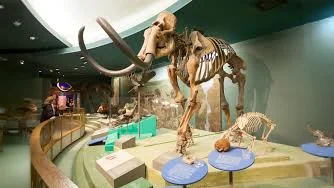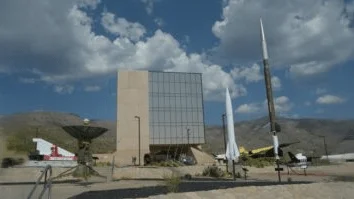A new species of duck-billed dinosaur has been identified by a team of researchers, including paleontologists from the New Mexico Museum of Natural History & Science (NMMNHS). The dinosaur, named Ahshiselsaurus wimani, lived approximately 75 million years ago in what is now northwestern New Mexico and may have weighed over nine tons.
Dr. Anthony Fiorillo, Executive Director of NMMNHS and co-author on the study, said, “Discoveries like this remind us that science truly is a community. Our team of researchers spanning five institutions and two countries were able to build upon research that started nearly a century ago and now advances our understanding of what our state looked like during the Late Cretaceous Period.”
The discovery was published in the Bulletin of the New Mexico Museum of Natural History and Science. Dr. Fiorillo collaborated with Dr. Spencer Lucas, Paleontology Curator at NMMNHS; lead author Sebastian Dalman from Montana State University; Steven Jasinski from Harrisburg University; Edward Malinzak from Pennsylvania State University; and Martin Kundrát from Pavol Jozef Šafárik University in Slovakia.
Dr. Lucas commented on the ongoing discoveries in the region: “It seems like paleontologists are discovering new dinosaurs in New Mexico every few months. This new hadrosaur just adds to my conviction that there are many, many new dinosaurs still out there waiting to be unearthed!”
Ahshiselsaurus belongs to the hadrosaurid family, which includes other herbivorous duck-billed dinosaurs such as Parasaurolophus and Edmontosaurus. The bones used to identify Ahshiselsaurus were originally uncovered in San Juan County by collector John B. Reeside, Jr. in 1916. These fossils were initially classified as Kritosaurus navajovius in 1935 but have now been recognized as distinct due to several differences found during recent research.
Researchers estimate that Ahshiselsaurus could grow more than 35 feet long and weigh around nine tons. Unlike some relatives such as Parasaurolophus, it likely did not have a head crest but shared their large size and plant-eating habits.
The dinosaur’s name honors the Ah-shi-sle-pah Wilderness area where it was discovered—a site known for other significant fossil finds including Pentaceratops. Naming input came from Pedro Toledo (Gááłnez) (Diné), an exhibit fabricator at NMMNHS.
For further details about ongoing paleontological research at NMMNHS, information can be found at nmnaturalhistory.org/science/sections/paleontology.
The New Mexico Museum of Natural History & Science operates under the Department of Cultural Affairs and serves as a key center for preserving natural heritage through its collections and educational programs across geoscience disciplines.









